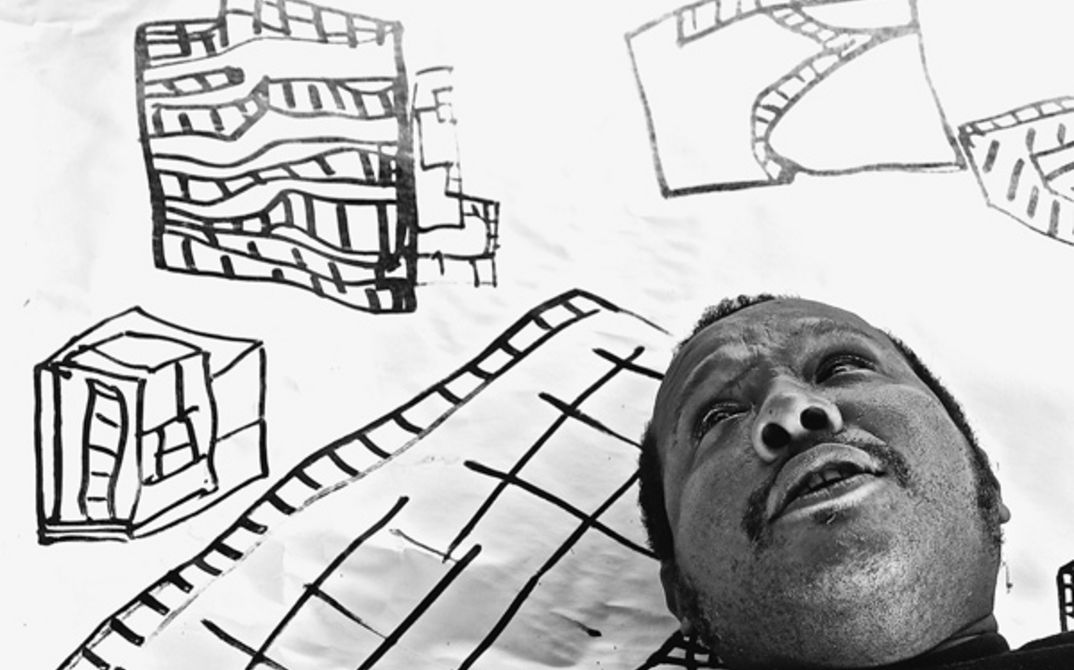The Incredible Voyage of Being
One could say, in skilled words, that EU SOU O RIO by Anne and Gabraz is a film that represents a new cinematographic genre: it’s a spectrum film, developing through an extended contemplative epiphany about the junkie “neo-concrete” artist Tantão (who got this nickname from his sister in his childhood). It is more about the freedom of being that anticipates creation than a discourse for or against synthetic drugs. “Is it worth it or not?” he rhetorically asks himself in the catharsis-lyrics of a song.
As an audience, we get involved and immersed in a period of coexistence with Carlos Antônio Mattos, his real name, who believes that “an artist doesn’t die, but kills himself,” and who, in 1983, with Márcio Bandeira and Lui, founded the post-punk band Black Future. The narrative suspends real time, creating a spooky and cosmic sensation of the personification of the aura-soul that transcends the eye of the camera and its “voyeur” audience. “Music is made of water. It’s the water crisis,” he says.
EU SOU O RIO presents the hyperactivity, verbiage, the “fried mind,” the idiosyncratic paranoia of the homage-man, who has his experience respected in a film that only wants to depict him, not to judge him in any way. It is a synesthesia-experience of core-ellipsis moments, of stylistic language, as in the first shot in which we can only hear (in a monochromatic version in the manner of Derek Jarman’s BLUE) a fractured hyperbolic collection of words, voices, dictions, locutions, punctual or displaced sentences, internalized phrases, and “uneasy” verbs.
And/or the zoom camera that gets so close that it becomes part of the characters themselves, embracing Paula Gaitan’s SUTIS INTERFERÊNCIAS and A NOITE or OS MONSTROS by Alumbramento, with TRANSEUNTE by Eryk Rocha. And/or the granulation of the digital image, still dark, almost invisible, but which already allows us to see something. The feature film, inside-out, from darkness to sound clarity, from invisibility to the main focus (of being the theme of “my friend is making a film about me”), shares in the agitation at a schizophrenic level in a free construction, purposefully amateurish and intimately homemade.
It is the search for clairvoyance. It is the depiction of a human being who “doesn’t like to sleep” and who resists until obtaining the silence of his acceleration. All in one weekend of this iconic underground musician and visual artist from Rio de Janeiro since the 1980s. And he manages. He talks to his paintings and imaginary friends which are part of himself. How many Tantãos are there in one Tantão? EU SOU O RIO is a film about him and for him, a film which follows him on his paths in a repetitive-expository way, his magnifying glass to check the photos on Facebook, his cigarettes and cocaine. This film is his own reality-show in Andy Warhol’s frames. It is about his importance, feeling loved and caressed and expressing the voice of his art. “This is the validation of great art,” he says.
Are all histories relevant? Must everyone be characters in their own film? Yes! And each time we spectators embark in his trippy ideas of his liquid “honest art,” which extrapolate the edges of the stages of being as a form. EU SOU O RIO is concrete and abstract at the same time and shows that every artist is “misunderstood” when he is pre-creating, in his daydreams and idleness. And that in the creative mind there is only one logic: the creator’s own. Him and his floppy discs and clumsy walk.
This is his BEING JOHN MALKOVICH, by Spike Jonze, and written by Charlie Kaufman, in stained glass reflections. It is humanizing the craziness that the artist has to get out of himself, to access new me(s), to go back to ground zero and to return to the first me. Is it too crazy for you? Indeed, anyone who never acted this way throw the first word. At least if you are an artist-thinker.
EU SOU O RIO is not about the city of Rio de Janeiro. It is about the flow of “the water” of the brain itself, which is permanently in “crisis,” integrating the city as a scenario and passage, in spontaneous actions from the others who don’t perceive the “hidden” camera, while selling his pictures for “fundamental funds.” It is everything against normalization, mediocrity, and passivity in resignation of the comfortable apathy that plagues desires, wills, dreams, and transcendent possibilities. In short, there is no way of not wanting to be Tantão for the uniqueness-particular-individual of being many in one.
(Fabricio Duque: “A incrível Viagem do Ser,” in: “Vententes do Cinema,” 21 November 2017, URL: http://vertentesdocinema.com/2017/11/21/critica-eu-sou-o-rio/)
